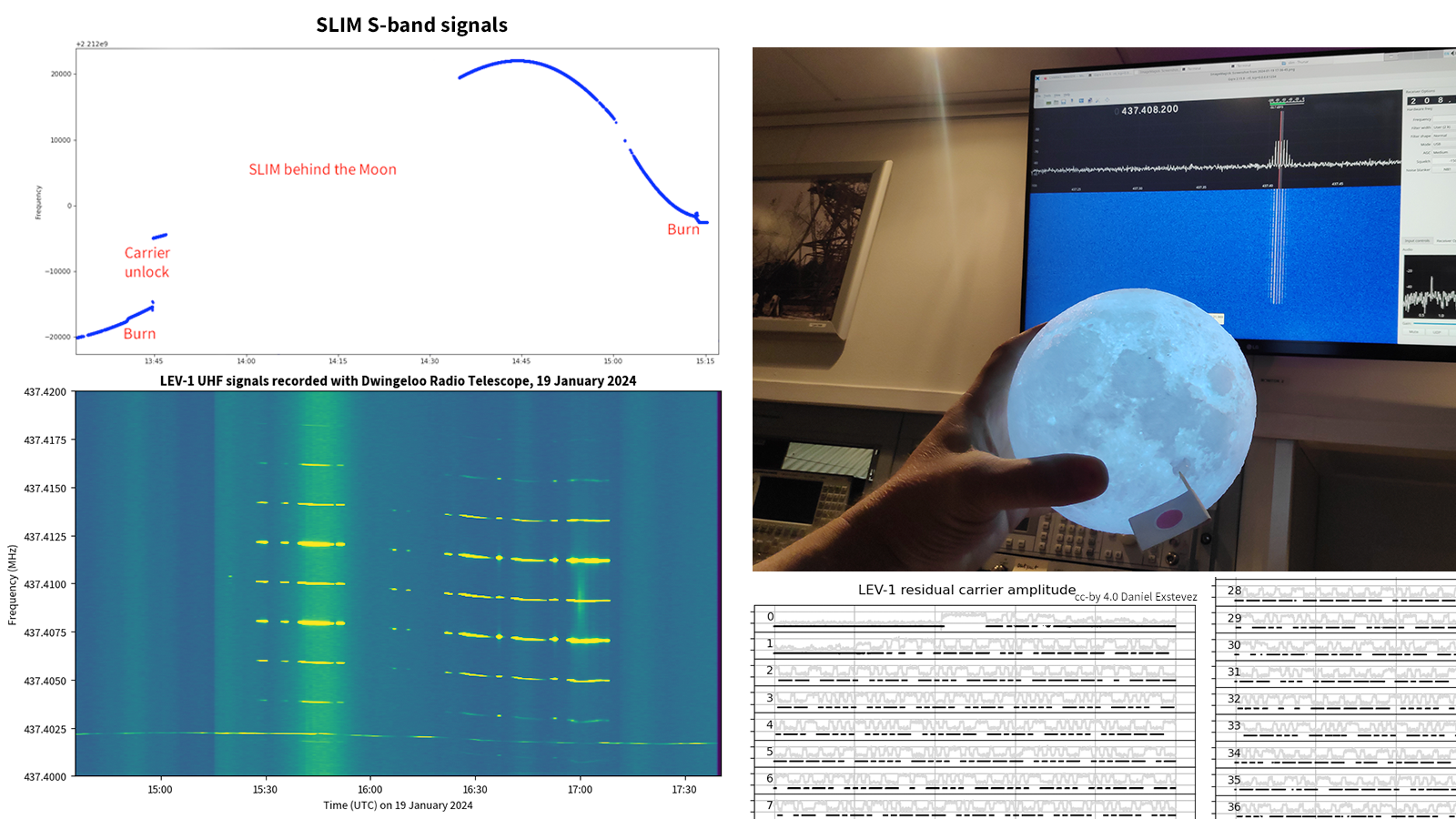Daily Image
22-01-2024Dwingeloo receives UHF from Japanese Moon rover
| Submitter: | Tammo Jan Dijkema, on behalf of CAMRAS |
| Description: | On 19 January, Japan landed a vehicle on the Moon. This lander, SLIM, had two Moon rovers on board: LEV-1 and LEV2. LEV-1 was equipped with antennas that could communicate directly with Earth. One of these antennas, developed by radio amateurs, transmitted on UHF frequencies that can be received by the Dwingeloo telescope. We tracked the landing itself on S-band (around 2200 MHz). Through Doppler shifts, we could track the line of sight velocity of the lander. We could clearly see two burns, showing that the landing went according to plan. During the landing, the rovers were thrown overboard, for their own 'soft landing' with around 10 km/h. From this point, we focused on the UHF transmissions of LEV-1, because we have the best system for this. In fact, our system should be more sensitive than the main 12 meter Japanese Wakayama dish used for tracking LEV-1. We received the first LEV-1 UHF signals on 15:19 UTC. The signals remained until 17:09 UTC, with some disruptions. There was some press coverage of our tracking: an interview on Radio 1, an announcement in Meppeler Courant, an article in Dagblad van het Noorden, and a report on RTV Drenthe. The signals from the Dwingeloo dish could be followed live through WebSDR, where about 30 amateurs were listening in. Also, our raw (baseband) recordings are available through .">https://data.camras.nl/satellites/raw/. With those data, other radio amateurs have partially decoded the data already. There is some uncertainty about the success of the SLIM mission: the landing went well, but there are problems with power. For the LEV-1 UHF payload, we can now say that we could receive the signals well, which makes the mission a succes, at least for us. CAMRAS volunteers have tracked the Moon also on Saturday 20 January but have received no further signals of LEV-1. In 2019, we also tracked two Moon landing attempts: Beresheet (Israel) and Chandrayaan-2 (India). In both of those attempts we saw the signal disappear abruptly: a sign the lander had crashed. Also the American Moon mission Artemis 1 was tracked by CAMRAS for one month, in an official cooperation with NASA. The observation of the Japanese landing was performed independently. |
| Copyright: | CC-BY-SA 4.0 CAMRAS |
| Tweet |  |
